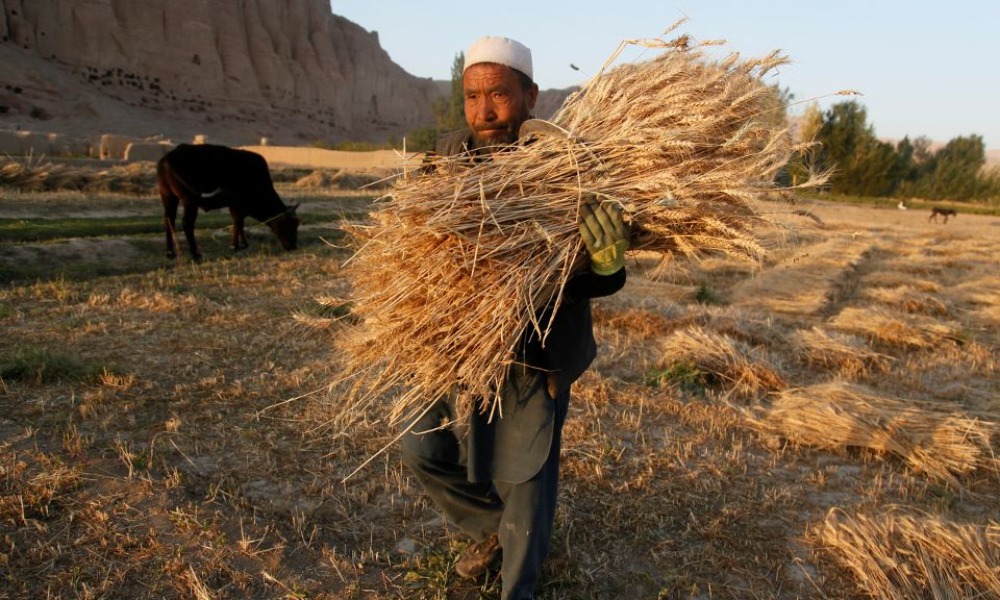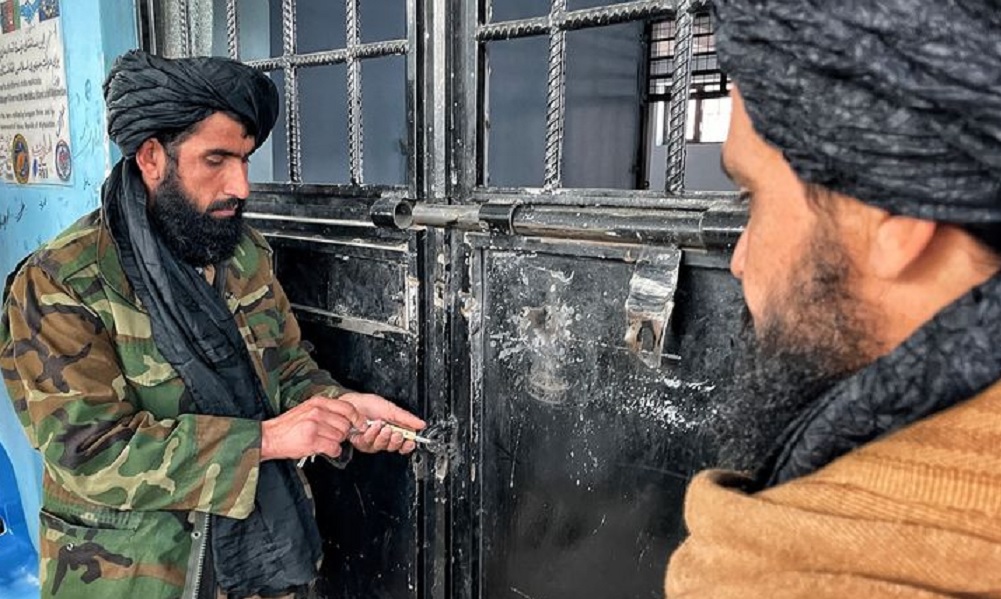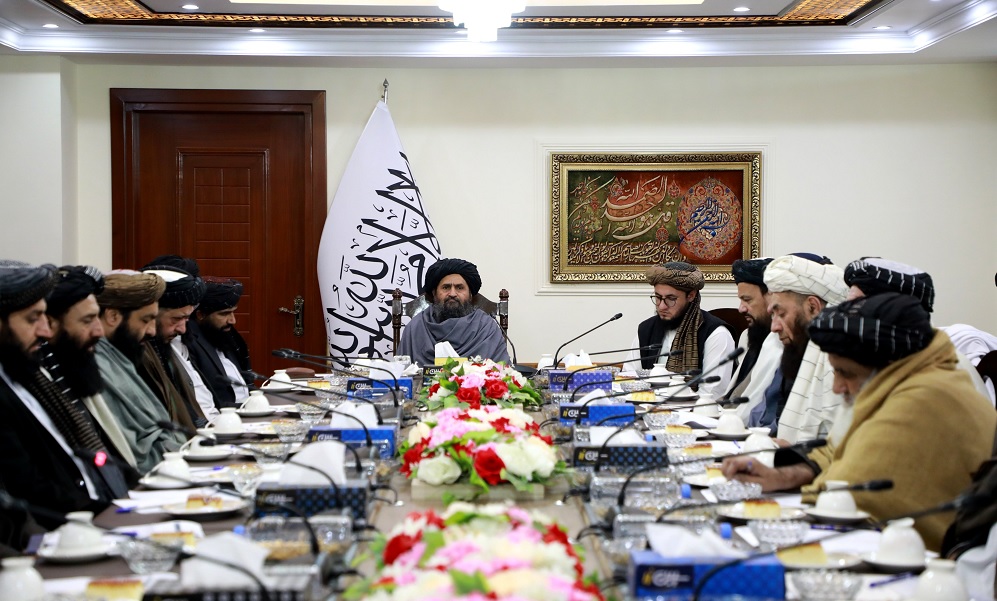Latest News
Drought compounds humanitarian crisis in Afghanistan as conflict intensifies

Millions of Afghans are struggling to put food on the table as prolonged drought disrupts supplies in a country reeling from a surge in violence as U.S.-led foreign troops complete their withdrawal.
Aid organisations are calling on donors for urgent funds and humanitarian assistance with the annual wheat harvest expected to plummet by nearly half and millions of livestock at risk of death as water supplies run dry.
“It’s a multiple shock,” said Necephor Mghendi, head of the International Federation of Red Cross and Red Crescent Societies (IFRC) in Afghanistan.
“Generally, there has been an impact on availability and distribution of food … and the conflict is causing internal displacement, which means increased demand for resources in certain regions.”
The entire country is facing moderate to severe drought, President Ashraf Ghani said in late June, acknowledging that the national disaster management budget was not enough to cover what experts say is one of the worst droughts in decades in terms of geographic scale.
“We … will not allow the country to face famine,” Ghani said in a statement. “Our effort is to address all districts, even those under the Taliban control.”
The Islamist insurgents have stepped up their campaign to defeat Ghani’s U.S.-backed government as foreign forces leave after 20 years of conflict and have swept into numerous rural districts across the country.
With very little functioning irrigation, Afghanistan relies on snow melting in its mountains to keep its rivers flowing and fields watered during the summer and snowfall last winter was again very low.
Fahad Saeed, a climate scientist at Climate Analytics, said a La Niña phenomenon and a weakening jet stream moving weather systems more slowly across the planet could be factors behind Afghanistan‘s extremely dry weather.
While it is difficult to link individual events to climate change, scientists agree that global warming driven by greenhouse gas emissions is contributing to extreme weather around the world.
“Afghanistan is a good example of climate injustice. It has historically no role in the climate change mess but they are bearing the brunt of it,” Saeed said.
Afghanistan was one of 23 countries the United Nations identified as “hunger hotspots” in a report last month, with at least 12 million people out of a population estimated at 36 million facing a food security crisis of not knowing when or where their next meal will come from.
The IFRC is trying to raise US$16.5 million but has managed less than half of that, Mghendi said.
“It’s a dire humanitarian situation that requires as much support as possible to get the very basics,” Mghendi said.
Latest News
About $80 billion worth of US military equipment abandoned in Afghanistan: Vance

US Vice President JD Vance said on Friday that Joe Biden administration left about $80 billion worth of military equipment in Afghanistan, which was a “catastrophic error.”
Vance made the remarks during a visit to a military base in Greenland.
He also said the Biden administration’s “catastrophic error” led to the deaths of 13 US soldiers in an attack during the evacuation at Kabul airport in August 2021.
Earlier, US President Donald Trump also criticized the abandonment of military equipment in Afghanistan and called for its return.
The Islamic Emirate, however, has said that the weapons left by the US in Afghanistan belong to the Afghans and will not be returned.
Latest News
IEA frees over 2,400 prisoners on the occasion of Eid

The Supreme Court announced on Saturday that based on the ruling of the supreme leader of the Islamic Emirate, 2,463 prisoners have been pardoned and released on the occasion of Eid al-Fitr.
The court said in a statement that the prison terms of another 3,152 prisoners have been reduced.
Eid in Afghanistan will be celebrated on Sunday or Monday, depending on the moon sighting.
Latest News
Economic Commission approves feasibility studies of four dams in different provinces

The Office of the Deputy Prime Minister for Economic Affairs on Saturday announced that feasibility studies of dams in four provinces of the country will begin this solar year.
The Economic Commission, led by Deputy PM Mullah Abdul Ghani Baradar, in its recent meeting decided to include the survey and feasibility projects of Grumby Dam in Maidan Wardak, Qara Tiri Dam in Balkh, Shana Nari Dam in Kandahar, and Wuch Nari Dam in Paktia in the budget for the fiscal year 1404.
In the meeting, the issues of construction of the Kandahar bypass highway, construction of Arghistan Dam, 90 km of electricity line from Kabul to Jalalabad, and completion of Sheikh Misri substation in Jalalabad were also discussed, and it was decided that the Ministry of Finance will allocate the revenues obtained from the Ganda Kotal lead and zinc mine in Yakawlang district of Bamyan province to these projects.
The Economic Commission meeting also approved a plan for the private sector’s investment in a 40 megawatts solar power generation project in the Hesar Shahi Industrial Park in Nangarhar province. According the plan, the private sector will invest $50.69 million in the project.
-

 Sport5 days ago
Sport5 days agoACB names Afghanistan A squad for tri-nation series
-

 International Sports4 days ago
International Sports4 days agoIPL 2025: Last over drama; Ashutosh Sharma clinches win for Delhi Capitals
-

 Regional4 days ago
Regional4 days agoEgypt makes new proposal to restore Gaza truce as Israeli strikes kill 65
-

 Sport4 days ago
Sport4 days agoAfghanistan eliminated from Asian Beach Soccer Championship
-

 Latest News4 days ago
Latest News4 days agoNorwegian Refugee Council cuts back on essential humanitarian services in Afghanistan
-

 Latest News4 days ago
Latest News4 days agoUN warns over 4 million Afghan girls will be deprived of education by 2030 if ban continues
-

 World3 days ago
World3 days agoSecretive Chinese network tries to lure fired US federal workers, research shows
-

 Latest News4 days ago
Latest News4 days agoDozens of needy families in Ghazni get much needed food aid from Bayat Foundation

























